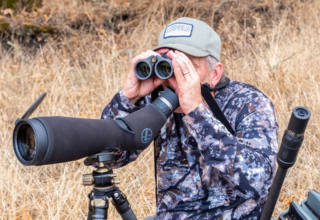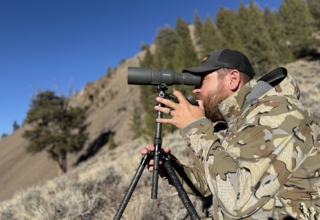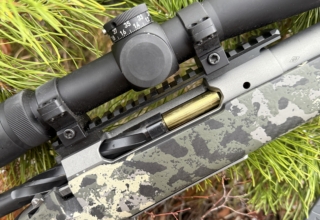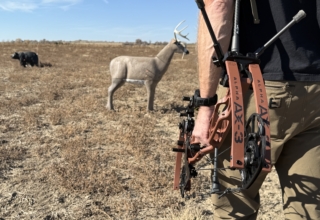Hoyt’s new-for-2026 aluminum flagship is fast, balanced, quiet, and features an all-new, no-bow-press-needed XTS Tuning System.
by Jace Bauserman
I get asked a lot what the favorite part of my job is. The answer is easy: Hunting. I’m an honest man, and while penning outdoor articles for a living doesn’t keep much green in the bank account, it does allow me to spend many days each year afield.
Next to hunting is reviewing and testing new gear, especially new bows and firearms. This year marks my 20th year of putting the archery industry’s latest and greatest compound bows to the test. The task of testing every new-for-the-year bow doesn’t get monotonous or mundane.
I look forward to the process each year, and by October, my new bow itch starts to burn. This year, it was Hoyt that shipped me one of its nine new-for-2026 bows first. The third generation of the award-winning Alpha X line, the AX-3 33, is a force to be reckoned with. Hoyt also launched the AX-3 in a 29-1/2-inch axle-to-axle model as well as an SD (Short Draw) model and an LD (Long Draw).
Of course, in true Hoyt fashion, the bow maker also launched four carbon-riser rigs: the RX-10, RX-10 Ultra, RX-10 SD, and RX-10 LD. The ninth new bow in the lineup is the Enduro. This 30-inch axle-to-axle, 7-inch brace height compound replaces the uber-popular Torrex line. The bow is billed as one that provides undeniable performance without the sticker shock.
AX-3 33 First Impressions
I’m not a flashy bowhunter. I don’t care about colored strings, accessory highlights that match my bow, etc. In fact, I don’t care much about bow color. From all camo to solid to solid/camo blends, the appearance of a compound bow matters very little to me.
For 2026, Hoyt added a pair of new color options—Georgia Clay and Sandstorm—to its bow lineup. My bow arrived decked out, head-to-toe, in Georgia Clay. The color is cool and stands out. However, I do recommend avoiding an “all” Georgia Clay look. Georgia Clay by itself isn’t an attractive color. Blend it with black limbs or a black riser, and it will provide you, compound color lovers, with a sick-looking vertical rig.

At a glance, the AX-3 33 much resembled my 2025 AX-2. The under-five-pound aluminum riser bow showcases a skeletonized riser with specific cutouts to reduce weight and boost strength. The proven HBX Gen 4 cam system is back, thank God. This is hands-down Hoyt’s best-ever cam system. The system offers 1/4-inch draw-length adjustments without a bow press, let-off settings of 75, 80, and 85 percent, and Hard and Xtra Hard backwall options.

In-Line Accessory Mounting is back. The front of the riser sports a cut-into-the-riser Pic rail for direct-to-riser sight mounting. The back of the riser features the IMS (Integrate Mounting System), which lets you mount your drop-away rest directly to the riser. Direct-to-riser accessory mounting reduces overall bow weight, boosts bow balance, and streamlines the accessory-mounting process.
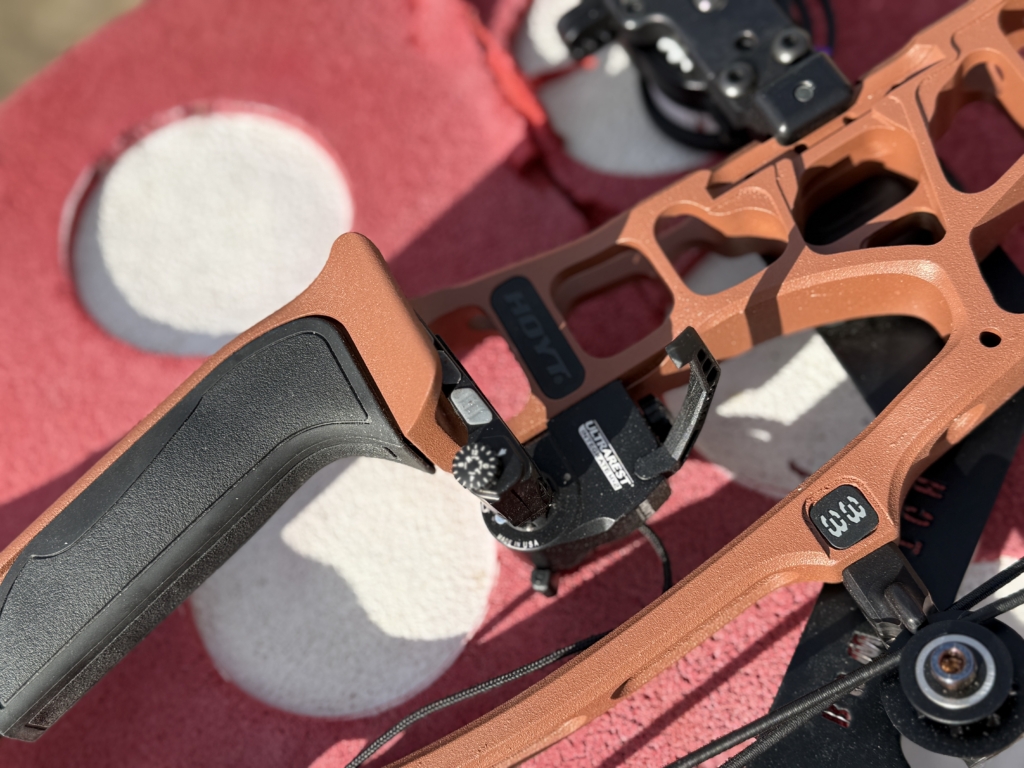
The sting stop, grip, and roller guard are remnants from the AX-2 line. Then I glanced at the limb pockets. I’m pretty sure at that moment, a chorus of angels sang a hallelujah song. The top and bottom limb pockets on the AX-3 33, and all Hoyt flagship model bows, for that matter, feature the newly designed XTS Tuning System.

Hoyt’s all-new patent-pending tuning system allows bow-press-free, no-shims-needed tuning. In past years, if archers couldn’t achieve a perfect paper tear or bare-shaft tune by tweaking the rest or nocking point, the axle pins needed to be removed and shims needed to be swapped or added. The process required a bow press, specific tools, and sound bow-technician knowledge. The good news is you can still shim Hoyt’s new flagship line of bows if needed. However, the XTS Tuning System will cure left, right, up, and down tears up to one inch. Best of all, you need nothing more than a 3/32 Allen wrench to achieve a perfect paper tear. More to come on the XTS Tuning System.
The AX-3 33: From Shop to Range
Each year, my job requires me to test a litany of accessories. Don’t get me wrong, there are some remarkable bow sights and rests on the market. But for the past 12 years, when it comes to maximum reliability and product performance, I’ve discovered none better than Spot-Hogg sights and QAD rests.
Sure to be my late-season whitetail rig, I added Spot-Hogg’s Boonie PM 5-Pin to the riser’s front and QAD’s Integrate MX-2 rest to the riser’s back. The bow pressed easily, and adding the drop-away cord to the down cable and timing the cams took minutes. Peep insertion was flawless. I’m impressed with Hoyt’s efforts to improve their strings. Since killing the FUSE string line and moving to WireWRX bowstrings engineered by Hoyt, string and cable performance have improved.
I removed the included Short Stop stabilizer and added an 8-inch Cutter Stabilizer Elevate Pro. I also added Hoyt’s Go-Stix 2.0 behind the stabilizer. These bow legs are the best I’ve found. They are fully adjustable and can be moved into four different positions.
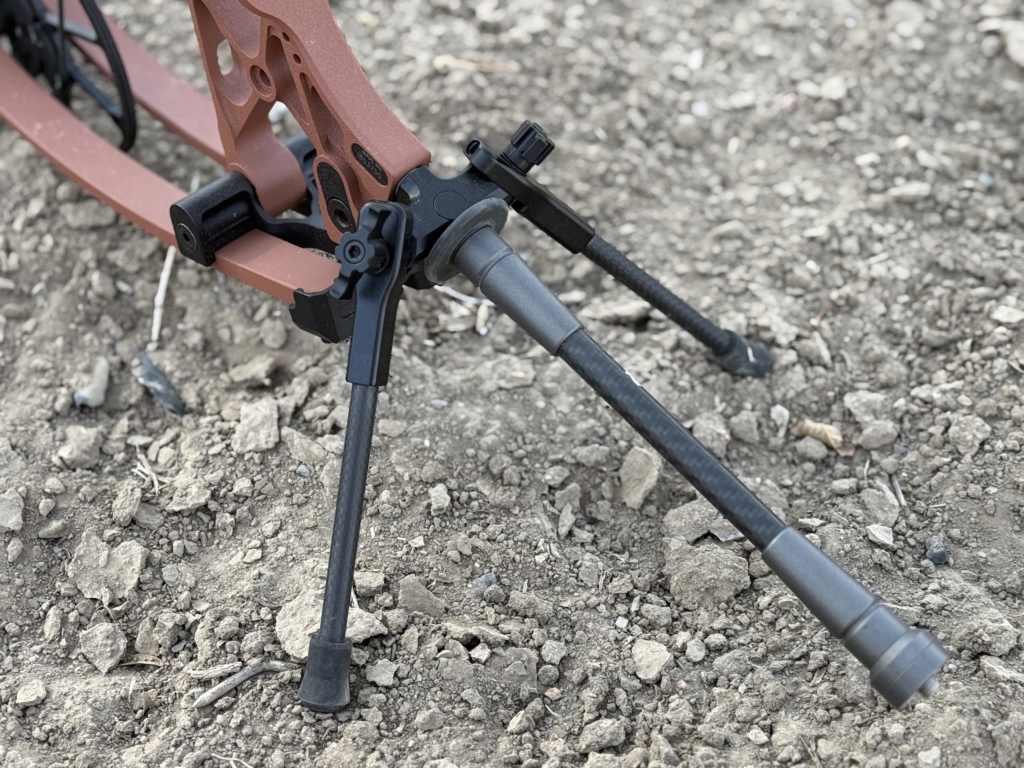
With the bow set up, I stood 10 yards from BLOCK’s Range target and sent an arrow. The bow felt fast, and the arrow entered the target straight. Those who’ve read my bow reports know I don’t paper tune until I get at least 100 arrows through a bow. I get it close, learn the ins and outs of the bow, let the strings and cables settle in, and then tune it up.
With my peep tied in and my 20-yard pin set, I performed a three-arrow speed test using Easton’s 5.0 386.4-grain arrows. I had fantastic success with these arrows in 2025, and I have no plans to stray from them. My three-shot average speed with the AX-3 33, set to a factory draw weight of 73.1 pounds, a 29-inch draw, and 80 percent let-off, was 316 fps, which is really fast. The bow also produced a tranquil three-shot dB reading of 62.2, which is significantly quieter than last year’s Carbon RX-9, which was the quietest compound bow I tested in 2025’s bow crop.

The AX-3 33: Dial It In
Before I ran my first Easton 5.0 through paper, I was driving tacks from 20 to 120 yards. Due to the bow’s speed, I still had housing clearance between the top of my arrow when my QAD MX-2 rest arm was cocked and the bottom of my sight housing. I will have zero trouble shooting this bow out to 140 yards. Before you tar and feather me, know that I’m a big believer in double-distance practice. I shoot daily, and when hunting western critters like pronghorn and high-country mule deer, I will drop the string on a relaxed animal at up to 80 yards. I’m confident in my abilities.
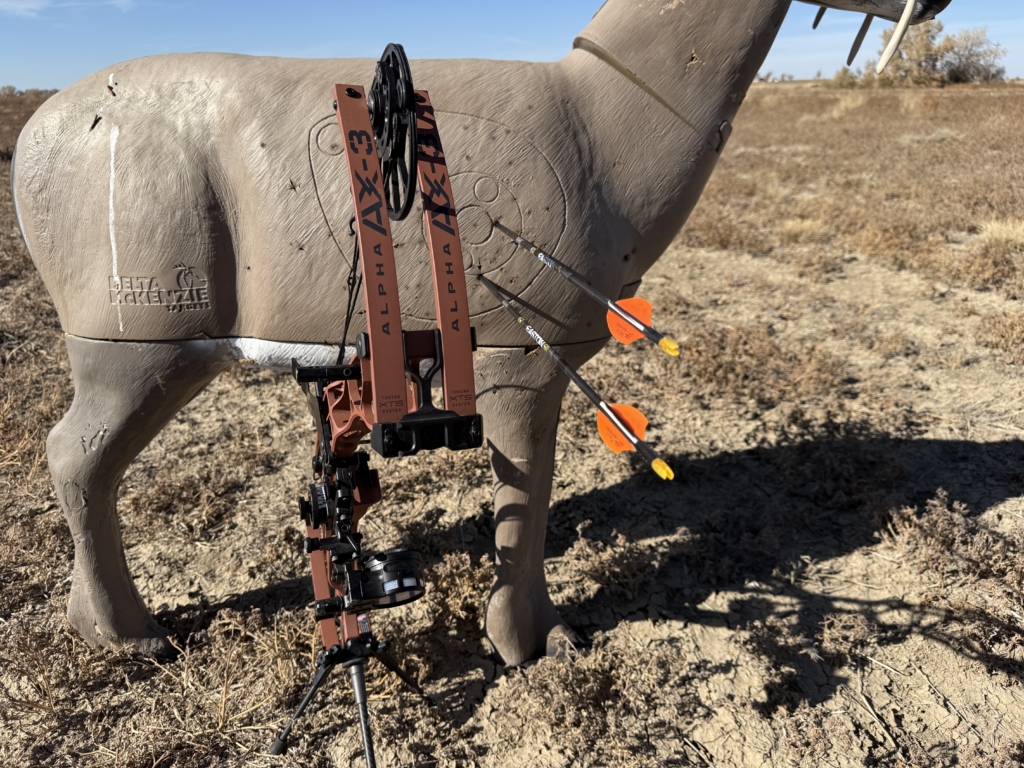
What makes me confident is double-distance practice. When you routinely practice twice as far as your maximum hunting distance, confidence grows. A bow like Hoyt’s AX-3 33 blends a balanced long axle-to-axle feel with speed and a dead-in-hand shot. This is a lethal trio that builds shooting confidence quickly.
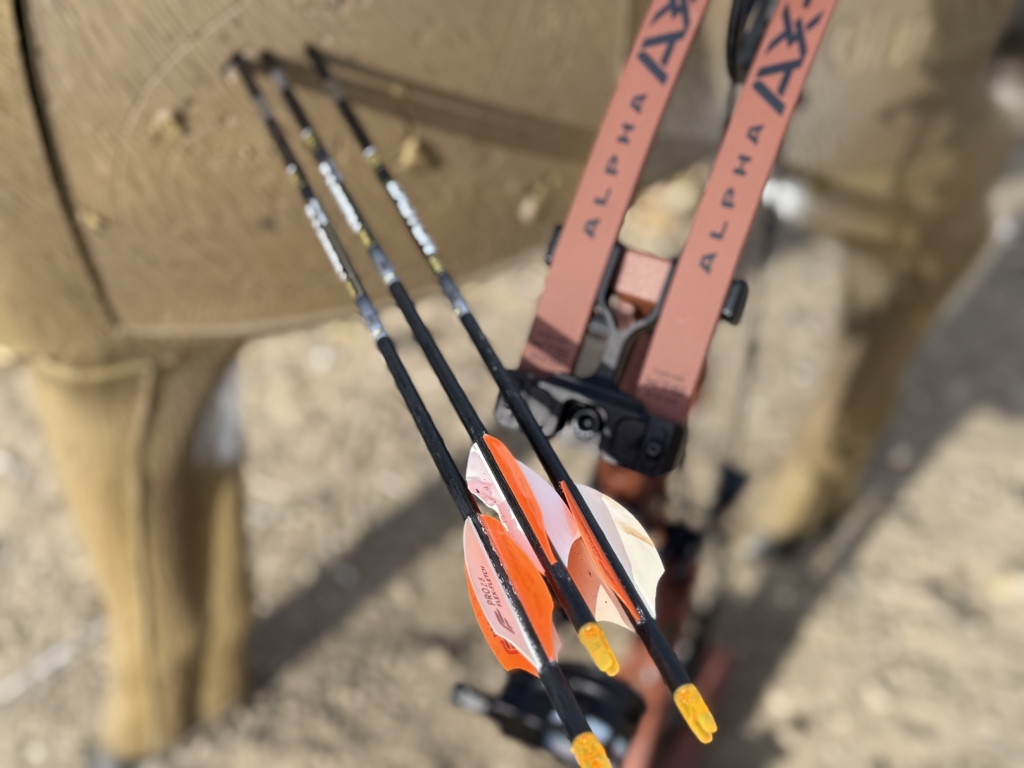
After over 100 arrows, I shot the AX-3 33 through paper. I had a right-hand paper tear of less than 1/2 inch. My bare shaft also produced a slight right tear. Using Hoyt’s downloadable White Paper, which walks you through every phase of the XTS Tuning System, I went to work.
With the bow set in a bow vice with the limb pockets facing toward me, I used a 3/32 Allen wrench to loosen the shuttle block locking screws on the top and bottom limb pockets. The shuttle block locking screws are visible in the limb pockets. You will see five laser-engraved marks and the shuttle block screws. Next, I inserted the 3/32 Allen wrench into the top right hole on the front pocket and made a slight clockwise turn. Next, I inserted the wrench into the top left hole and made the same clockwise adjustment. After making adjustments to the top pocket, I did the same to the bottom pocket. After locking the shuttle block screws down, I took another shot through paper. The tear was perfect.

Over the course of three weeks, I’ve shot field points, fixed, and mechanical broadheads at block-style and 3D targets from 10 to 120 yards. This bow is a tack driver. The draw cycle is butter; it sits like a well-trained Labrador retriever at full-draw, resisting torque and improving the shooter’s natural point of aim, and if you do your job and execute a good shot by allowing the release to fire the bow, your arrow will replace your sight pin.
AX-3 33 Final Thoughts
Many eggs have been laid over the years in the bow-building world. During my bowhunting/archery tenure, I can say with full transparency that Hoyt has never laid a bad-bow egg. Some models have been better than others. Though I had a remarkable year in the field with the 2025 RX-9, it was one of my least favorite Hoyt bow builds. I just could never get used to the stiff draw cycle and jumpy backwall. Aside from that, the bow is bombproof.
Because Hoyt knows what they have and continues to build on past year’s successes, they are never reinventing the wheel. They just make their wheel better. Case in point: The XTS Tuning System! I loved my 29-inch axle-to-axle AX-2, but the AX-3 33 with the integrated XTS Tuning System trumps every previous Hoyt aluminum build. If you’ve saved your pennies, waiting on a bow maker to develop a flagship worthy of its price tag, Hoyt’s AX-3 33 is the bow to buy.


